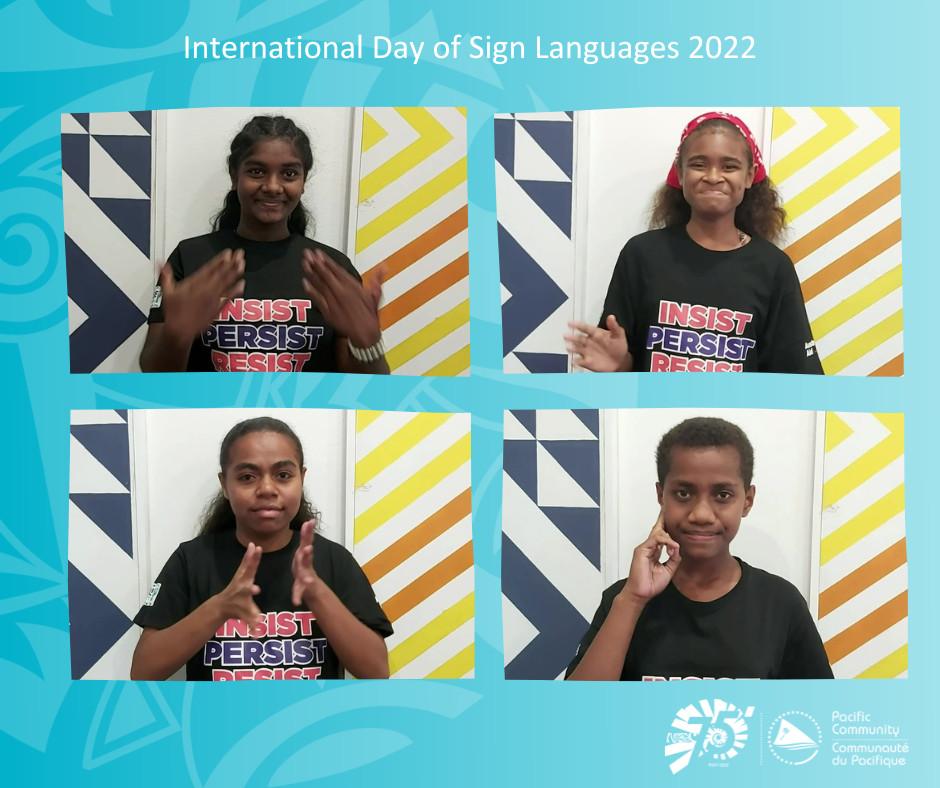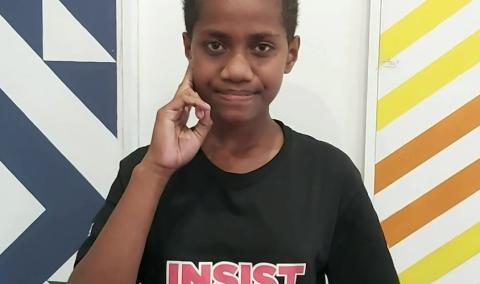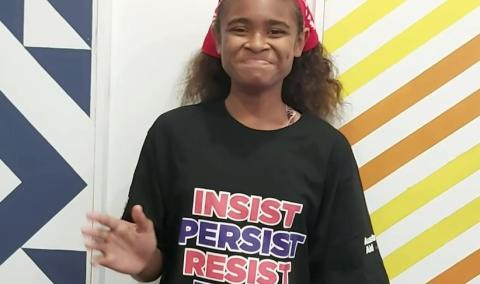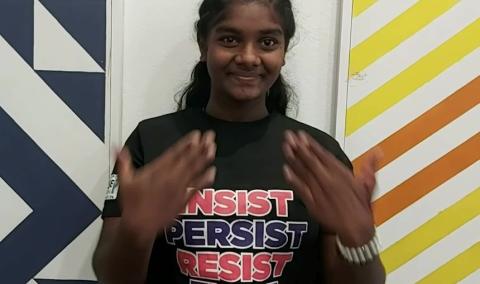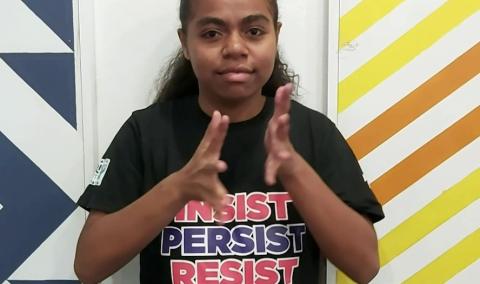International Day of Sign Language important for FWRM Grow.Inspire.Relate.Lead.Succeed - GIRLS programme
“Deaf girls can do anything,” signs Vasiti of the Fiji Women’s Rights Movement (FWRM) GIRLS programme.
She is one of the many girls in six Pacific Island countries who have been reached by projects supported by the Pacific Girl programme since it began in 2019. Through partner-led activities, girls – including girls with disabilities – are being supported to advance their rights and opportunities.
The programme partners have been supported to build on initiatives that have been designed for their individual country contexts – with Pacific Girl providing dedicated resources and technical expertise to partners to accelerate the impact of their work and share the learning across the region.
Girls in the Pacific face multiple and intersectional barriers limiting their full and equal participation in society. These barriers have been further compounded as a result of the COVID-19 pandemic, with girls and women disproportionately affected – facing even higher than normal rates of violence and sexual abuse, loss of income and opportunity, and increased unpaid domestic work in their homes and communities.
FWRM implements Girls Arise, which documents the organisation’s girl-centred approaches to adolescent girl programming in a toolkit. The toolkit aims to assist FWRM staff and other partners, in guiding their flexible programming approaches to working with diverse adolescent girls. The Girls Arise programme is supported by the Australian Government through Pacific Girl, managed by the Pacific Women Lead programme at the Pacific Community (SPC).
Initially working to include Deaf girls in an earlier programme, supported by the International Women’s Development Agency (IWDA), FWRM’s approach aligns to broad principles of engagement with Deaf girls as part of the Deaf community – a culturally distinct group that specifically identifies as ‘Deaf’ (with a capital D, i.e. “Deaf girls”) rather than the broader definition of people with hearing impairment.
Sign language is a core element of Deaf culture, with variations across the Pacific and, more broadly, the world. Therefore, connecting with the appropriate stakeholders – such as the Deaf community and its representative bodies – is vital to tailoring development initiatives that respond to their different needs, identities and language.
To this end, FWRM initially partnered with the Fiji Association of the Deaf (FAD), over time extending their collaboration to other institutions such as the Gospel School of the Deaf.
“We have partnered with FAD to sensitise our work, particularly the toolkit,” explained Emeli Anise, FWRM’s Team Leader for the Intergenerational Women in Leadership Programme (IWLP). “FAD helped us design the FWRM GIRLS Programme Deaf Girls Engagement Strategy and through them, we identified a Deaf consultant to help us sensitise our work, specifically the toolkit.”
This collaboration is also reflected in a cross-sensitisation Memorandum of Understanding (MoU) with FAD. The two organisations have been sharing their respective expertise in gender equality and deaf inclusion since 2019, including FWRM staff learning Fiji Sign Language (FJSL).
“The toolkit consultant has also developed a glossary for jargon we often use – like feminism and intersectionality – because there was no [FJSL] sign for it,” added Ms Anise. “Right now, the glossary is being reviewed by the FAD.”
“The consultant has also helped our programme content to be deaf girl friendly and linked us up with organisations that specifically work with Deaf children like Gospel School for the Deaf and Hilton Special School.”
Some of this work has been implemented by focusing on a core cohort of 10 Deaf girls, but engagement has also extended to a greater number of Deaf girls through platforms and events like the Girls Forum.
This year, FWRM is sharing a series of messages from their core cohort of Deaf girls in a video on social media in commemoration of the International Day of Sign Languages. In the video girls highlight their rights, needs and priorities as well as encourage others to learn
“I need to have sign language in school,” highlights Silina.
“Sign language is fun,” adds Shakshi. “Learn sign language. Respect my sign language.”
According to Ms Anise, finalising the toolkit and the partnerships with FAD and Gospel School of the Deaf are just the first steps to embed an inclusive approach to FWRM’s adolescent girl programming.
“The end of programme evaluation for the GIRLS programme in 2015—2017 recommended we reach out beyond Suva and with other groups of girls. We hope the upcoming Pacific Girl mid-term evaluation will also inform us how to strengthen this work. We really want to channel our advocacy work to have girls really influence the formal structures that influence their education.”
This year, Deaf girls from both the core cohort as well as additional girls attending Gospel School of the Deaf attended the second Girls Forum – making the safe space for girls to amplify their voice and guide the advocacy priorities of the GIRLS programme more inclusive.
“Yes, I am a Deaf girl child,” signs Leilani. “I also have rights to access to services and resources. Disability rights are human rights.”
The International Day of Sign Languages is a unique opportunity to support and protect the linguistic identity and cultural diversity of all Deaf people and other sign language users.
Sign languages are an essential human right for Deaf people – the Convention on the Rights of Persons with Disabilities, ratified by Fiji in 2017, recognises and promotes the use of sign languages. It makes clear that sign languages are equal in status to spoken languages and obligates states parties to facilitate the learning of sign language and promote the linguistic identity of the deaf community.
International Day of Sign Languages has been annually commemorated on 23 September since 2018.
